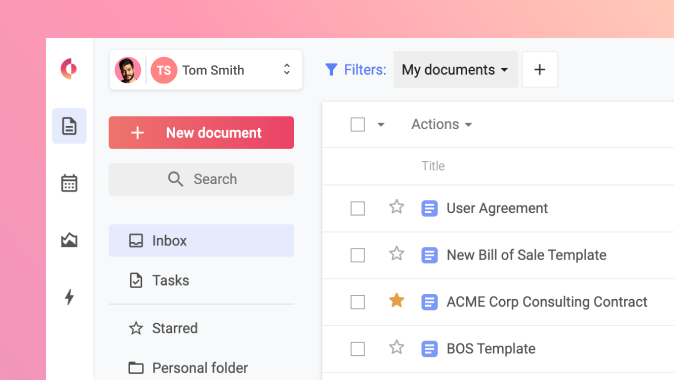3 Strategies for Using a Contract Repository as Stored Knowledge
We sat down with thought leaders in contract management to learn their insights, predictions, and advice for improving this field of work. Neil Berman is General Counsel at BeenVerified, whose mission is “to help people discover, understand and use public data in their everyday lives.”
Neil Berman did the math when he worked for a traditional law firm many years ago. If he worked on a regular basis for a host of different clients at his firm for the duration of his career, he would likely need to spend nearly an entire year of his life just logging his billable hours.
He made the decision to become general counsel for BeenVerified four years ago, and experienced firsthand what a powerful resource strong contract storage can be.
Obviously, document storage needs to be secure and thorough. However, some of the other strengths of it aren’t as apparent. Let’s dig into the ways it can be not just a necessity, but an asset.
Strategy #1: Invest in using the same system for a sustained period of time.
This tactic is more complex than it sounds. It is about having a complete repository of documents, learning shortcuts for contract management, and creates a knowledge base for new legal professionals.
When talking about the ability to find previous documents, Neil knows the time invested in the repository is a critical factor:
“It’s always embarrassing when you have to admit to another party that you can’t find something. Unfortunately, I don’t have a DeLorean, so prior to 2017 (when Neil joined BeenVerified), I can’t find everything because I wasn’t there.
Here is how investing in a document management system can pay off:
- Time invested in a storage system reduces the embarrassment of lost information. Switching document storage methods from a desktop to a Google Drive to another platform, over and over, is a recipe for missing documents. Massing all documents in the same place for several years means never losing another contract.
- You learn how to use the contract platform more efficiently. Neil remembers back in his law firm days, he learned a shortcut on his keypad for certain typographical characters (only lawyers use) to quickly reference statute sections and the like. On a contract management platform, regular prolonged use helps you discover the process that works best for you. The more you practice using a single method, your proficiency with the tool improves.
- Stored contracts become a knowledge base for new hires. Neil remembers when he started at his first law firm at the beginning of his career. “I had some down time during my day and I got really good at searching through our contract database and learning from previous contracts.” Providing examples of every type of contract in your organization’s history gives your team an opportunity to learn.
- Past examples of documents also provide templates for the future. No matter how infrequent your team uses a particular document with a specific party, having an example on hand can save time and increase accuracy. This shortcut can help junior team members, as well as simplifying work for in-counsel veterans.
Besides using previous documents as examples for future contracts, building actual templates provides a host of benefits. Next, we learn what Neil advises about using templates.
READ MORE: Thought Leadership Piece on Contract Storage Best Practices
Strategy #2: Use templates not just for streamlining drafting, but to also accelerate redlines.
Most general counsels prefer to work with contracts that are on their own paper. Of course, using your own original contracts allows you to phrase terms in a better position for your organization.
Using templates helps protect your interests, and it also has an unexpected benefit. When you use a template to draft a document, you also know what sections to focus on most for redlines.
Neil tries to minimize redlining when it is low stakes.
“For example, we process a lot of nondisclosure agreements. Almost every meeting with a potential partner involves an NDA. If another party supplies the contract and maybe we have lower exposure than they do, I will usually go along with it.”
However, when the contract is more sensitive, he prefers using his own templated draft. When negotiations begin, he knows exactly where to focus his attention for the most impactful redlines.
Strategy #3: Make contract storage support new data requirements.
The investment in committing to a document management system long term is becoming more and more necessary.
“The days are long past when we could depend on a simple shared drive for contract storage.”
As the U.S. starts to bend data privacy laws toward European GDPR standards, more robust document storage is a must. Companies need to have access to not only past contracts, but also a whole host of customer information and records.
“From Right-to-Correct requests to FOIA (Freedom of Information Act) requests, we need to be able to pull up records more than ever before.”
With years invested in a single document repository, these changing requirements are easier for Neil to accommodate. No matter what records are needed in the future, Neil will have everything he needs already organized.
Clearly, there are many benefits to investing time into making your contract repository a critical source of knowledge. From being a resource for new hires to streamlining data requests, putting in the effort to establish a robust document storage system has lasting dividends.
As Neil put it,
“Hopefully the time you’ve invested in learning a contract platform will be worth it and will be time well spent.”



